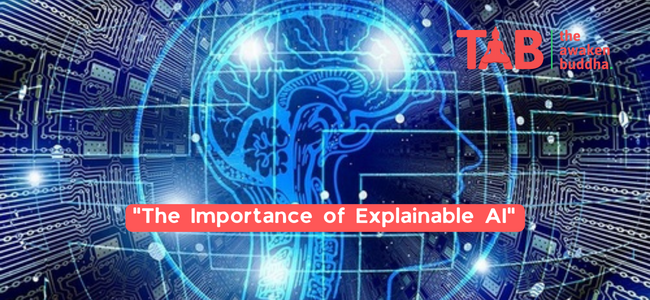Artificial Intelligence (AI) transforms industries by automating tasks, enabling predictive insights, and making decisions faster and more accurately than humans. However, as AI grows in complexity and becomes more intertwined in our daily lives, the importance of Explainable AI (XAI) is becoming increasingly apparent. This article will discuss the significance of XAI, its challenges, and the potential solutions to implement it.
What is Explainable AI?
Explainable AI (XAI) is a subset of artificial intelligence (AI) that allows humans to understand how an AI system makes decisions. It involves transparency and interpretability, which is crucial when the stakes are high and the decisions made by AI systems can have significant consequences.
Why is Explainable AI Important?
Transparency and Accountability
One of the primary reasons why XAI is crucial is transparency. When AI systems make decisions, knowing how they are made is essential. This transparency helps build accountability and trust in AI systems. If an AI system makes a wrong decision, it is easier to pinpoint the source of the problem and correct it if the decision-making process is transparent.
Safety and Risk Management
Another reason why XAI is important is safety. In high-risk situations such as healthcare, finance, and transportation, AI systems need to be explainable. In these scenarios, AI systems make decisions that can have life-altering or even life-threatening consequences. Humans need to understand how the AI system came to that decision.
Bias and Fairness
Explainable AI can also help address issues of bias and fairness. AI systems can inherit bias from the data they are trained on, which can result in unfair or discriminatory decision-making. XAI can help identify and mitigate bias, ensuring that AI systems make fair and just decisions.
Adoption and User Acceptance
Finally, XAI can increase the adoption and user acceptance of AI systems. If users do not understand how AI systems make decisions, they may be reluctant to adopt them. XAI can help bridge this gap by giving users transparency and insight into AI decision-making.
Challenges in Implementing Explainable AI
While the benefits of XAI are clear, there are still challenges to implementing it effectively.
Complexity
One of the primary challenges of XAI is complexity. AI systems are often complex and involve multiple models and algorithms, making it difficult to understand the decision-making process.
Trade-Offs
Another challenge is the trade-off between explainability and performance. AI systems prioritizing explainability may sacrifice performance, while systems prioritizing performance may be less explainable.
Interpretability vs. Explainability

Interpretability is another challenge. While XAI aims to make AI systems explainable, there is a difference between interpretability and explainability. Interpretability refers to understanding how an AI system works, while explainability refers to understanding why an AI system makes a particular decision.
Data Availability
Finally, the availability of data can be a challenge. XAI requires large amounts of data to train models and algorithms, and that data needs to be of high quality to ensure the decision-making process is accurate and unbiased.
Potential Solutions

Despite these challenges, there are potential solutions to implementing XAI effectively.
Standardization
One solution is standardization. Establishing standard methods and practices for XAI can help streamline the development and implementation process, making it easier for organizations to adopt and integrate XAI into their systems.
Interpretable Models
Another solution is to use interpretable models. Interpretable models are simpler and more transparent, making them easier to understand and explain.
Human-in-the-Loop
A third solution is to incorporate human-in-the-loop systems. This involves
A third solution is to incorporate human-in-the-loop systems. This involves having humans involved in decision-making alongside AI systems, which can provide additional insights and oversight. This approach can also help identify errors or biases in the AI system, which can then be corrected.
Transparency Tools
Transparency tools are also a potential solution. These tools can help visualize and explain the decision-making process of AI systems. They can help identify the inputs and outputs of the system, the algorithms used, and how the decisions were made.
Conclusion
In conclusion, Explainable AI (XAI) is crucial as AI systems continue to grow in complexity and importance. The benefits of XAI include transparency, accountability, safety, fairness, and increased adoption and user acceptance of AI systems. However, implementing XAI effectively presents challenges such as complexity, trade-offs, interpretability, and data availability. Despite these challenges, potential solutions such as standardization, interpretable models, human-in-the-loop systems, and transparency tools can help organizations implement XAI effectively and efficiently.
FAQs
What is Explainable AI?
Explainable AI (XAI) is a subset of artificial intelligence (AI) that allows humans to understand how an AI system makes decisions. It involves transparency and interpretability, which is crucial when the stakes are high and the decisions made by AI systems can have significant consequences.
Why is Explainable AI important?
Explainable AI is essential for transparency, accountability, safety, fairness, and increased adoption and user acceptance of AI systems.
What are the challenges of implementing Explainable AI?
Challenges in implementing Explainable AI include complexity, trade-offs between explainability and performance, interpretability vs. explainability, and data availability.
What are potential solutions to implementing Explainable AI effectively?
Potential solutions to implementing Explainable AI effectively include standardization, interpretable models, human-in-the-loop systems, and transparency tools.
How can Explainable AI help address issues of bias and fairness?
Explainable AI can help identify and mitigate bias, ensuring that AI systems make fair and just decisions.










